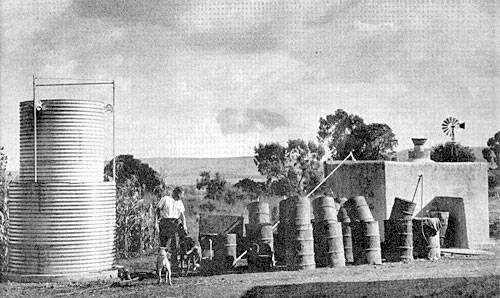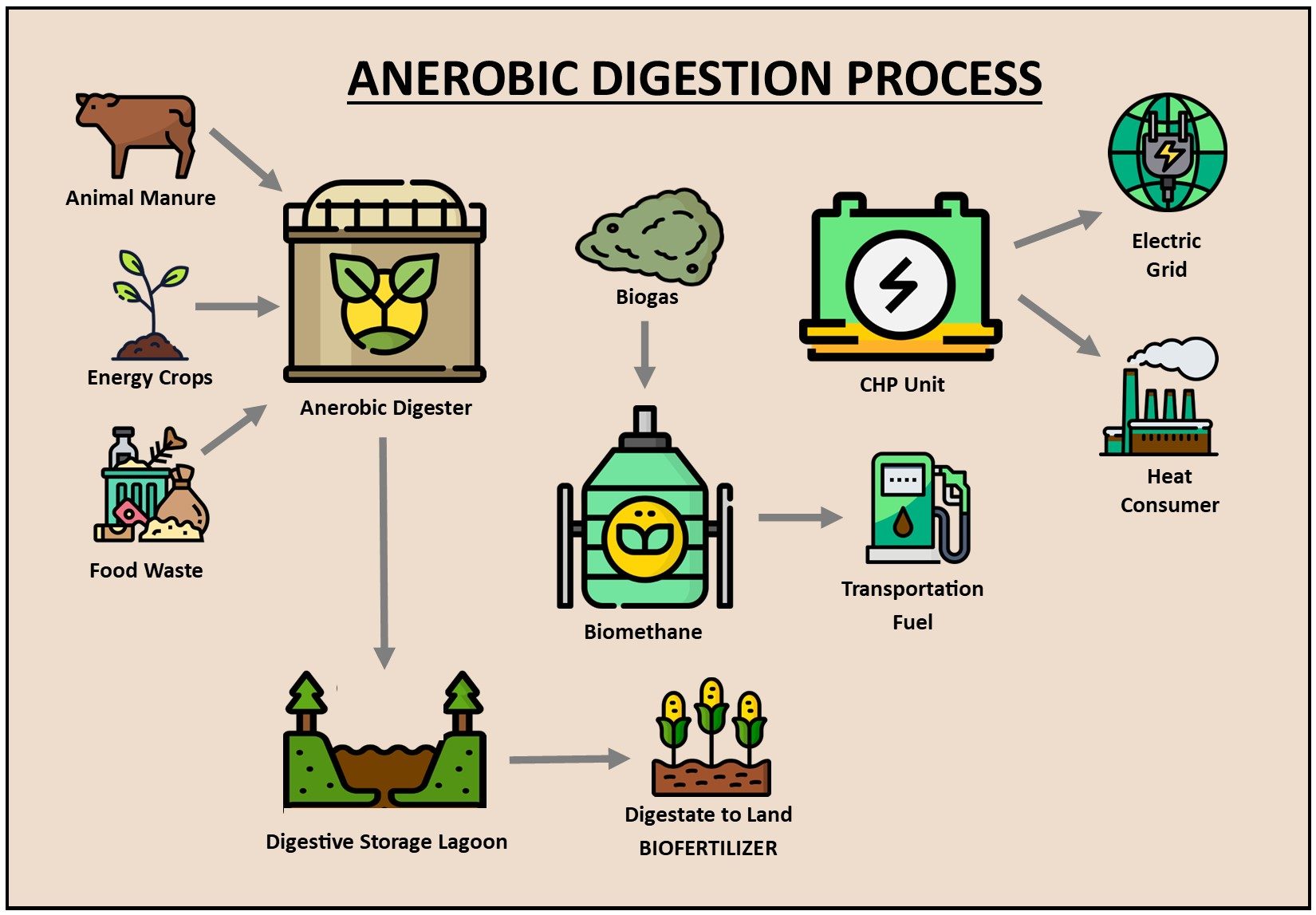Anaerobic means without air. And digestion, well you know how that works when you eat!
Anaerobic Digestion (AD) is a biological process that mimics nature and can be used to treat biosolids or organic waste. The process takes place in a system with no oxygen present so microorganisms (bacteria) can break down biodegradable material. This generates biogas, which can be used to produce heat and electricity, cleaned to run motor vehicles or injected into a natural gas pipeline.
Anaerobic Digestion has many nuances and there are a variety of digester types and technologies. The type of digester used is often determined by the type of organic waste that will be processed. These feed sources are commonly known as feed stocks and can vary from wastewater, food waste, animal manure, and even liquid organics. To learn more about the digester types used at the plant in Akron, Ohio, visit the Facility Overview page.
So, where did Anaerobic Digestion come from? While you might not have heard of it before, but the process of Anaerobic Digestion has been around for a long time. In fact, biogas was captured and used to fuel street lamps in England back in 1895! And, for many European farmers, small scale digesters have been used as a way to manage animal waste for centuries.

In recent years, the use of anaerobic digesters has become more common in the United States. This is partly due to increased regulations and pressures put on waste disposal and management. The AD process reduces a waste volume while simultaneously generating useful byproducts; energy and fertilizer, both of which are beneficial to the environment and provide economic benefits.

Benefits of AD
There are many benefits of anaerobic digestion, including environmental, social, sustainability, and renewable energy!
AD Benefits: Environmental
- Reduces the amount of waste wasted in landfills
- Reduces greenhouse gas emissions by capturing methane that would have otherwise been released into the atmosphere
- Creates a valuable source of Green sustainable energy allowing generators to break ties with fossil fuels and develop true energy independence
- Provides a nutrient-rich fertilizer that can be used as a soil amendment, to promote food production while relying less on mined synthetic fertilizers
- With increased nutrients and organic matter in the soil, plants grow bigger faster, which means they can sequester more carbon from the atmosphere helping to reduce atmospheric pollution
- Compared to AD generated fertilizers, manufactured fertilizers require significantly more energy and also contribute to increased greenhouse gasses
- Biosolid-enriched soil promotes stronger nutrient and water holding capacities, which dramatically reduces the threat of erosion and water-based nutrient pollution
- Helps decrease the carbon footprint, which in turn helps fight climate change
- Unlike other renewable energy sources such as solar or wind that require favorable conditions to function, biomass energy is available 24/7
AD Benefits: Social
- Anaerobic Digestion reduces noise and odors commonly associated with the management of biosolids
- Anaerobic Digestion reduces the amount of residual materials that need to be managed, which decreases material volumes that need to be removed from a site and overall liability issues
- Reduced volumes of materials, which significantly reduce truck traffic and associated CO2 emissions
- Provides outlets outside of landfills for local organic waste generators
- Produces community pride from environmentally sustainable and socially responsible wastewater management
AD Benefits: Economical
- Offers a cost-effective approach to biosolids management comparable to landfill disposal
- Creates renewable forms of energy that are not susceptible to fluctuations in market rates
- Offers a sustainable solution for biosolids management unhindered by changes in fluctuating State or Federal regulatory programs.
- Creates new revenue streams through fertilizer or manufactured product sales
- Dramatically reduces generator liability of residuals management
- Offers Public-Private Partnership investment and management opportunities through working with partners like KB BioEnergy
AD Benefits: Opportunity Creation
- Produces biogas that can be used in a wide variety of applications including; heat, electric, combined heat and power, pipeline quality methane, and even motor vehicle fuel
- Bolt-on business opportunities that can leverage cheap green energy for new business development or investment
- Opportunities to earn and monetize the growing market of Renewable Energy Credits (RECS)
- Creates product development and branding opportunities for material distribution or new business creation
